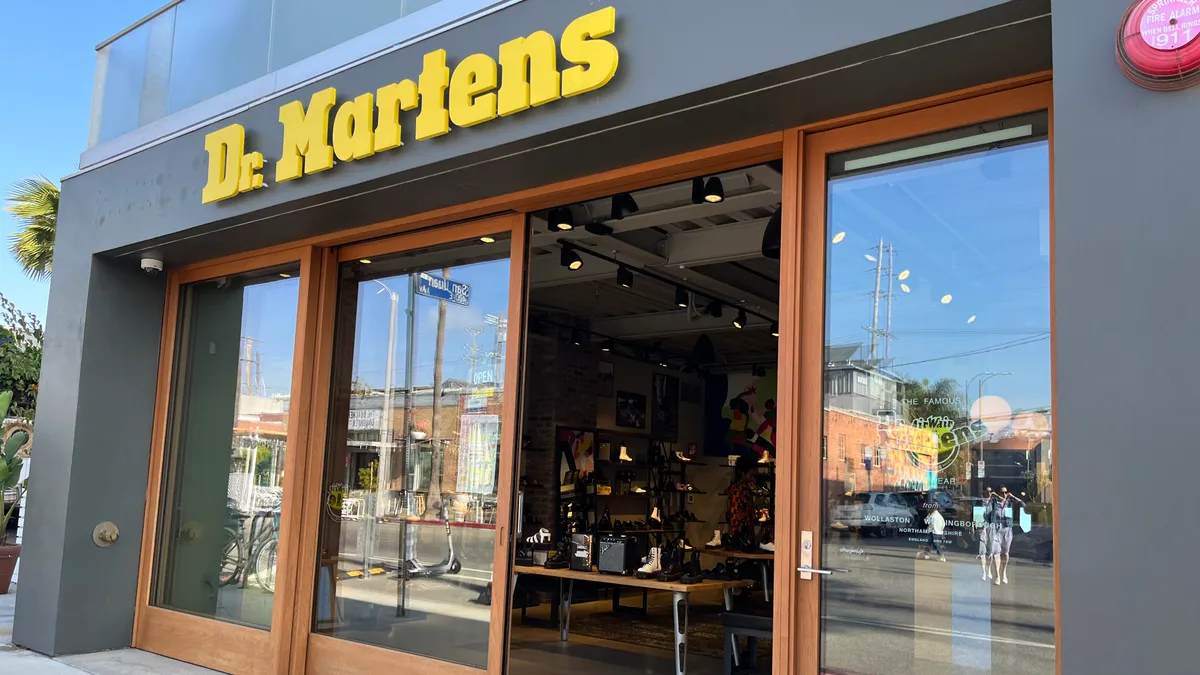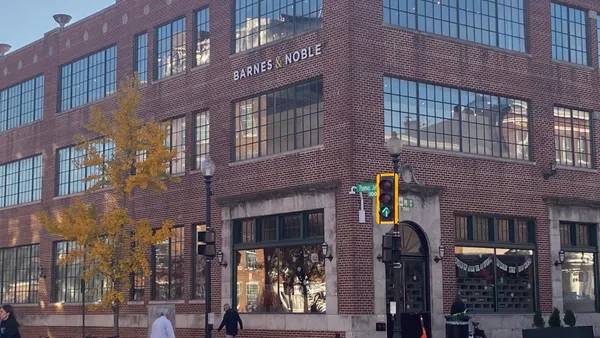Dive Brief:
- Dr. Martens said in a trading statement Thursday that a bottleneck at its Los Angeles distribution center created “significant operational issues” at the end of last year.
- The footwear retailer found itself overwhelmed with inventory after orders arrived earlier than anticipated. Transit times shortened for inbound shipments, and the company transferred stock from its Portland distribution center to Los Angeles faster than initially planned.
- To address the issues, the company has opened three temporary warehouses nearby and will start a third shift at the facility by the end of January. It will also accelerate an existing plan to have its East Coast DC ship wholesale orders.
Dive Insight:
Shipping delays have flummoxed supply chains and bitten into companies' financial results throughout the COVID-19 pandemic. Now, as schedule reliability continues to improve for ocean carriers and logjams have cleared at top West Coast ports, retailers are seeing the opposite problem — goods are arriving too soon and overstuffing warehouses.
Dr. Martens opened the 3PL distribution center in Los Angeles last year to support more efficient e-commerce fulfillment and an increased number of retail stores. It replaced the company's Portland facility, which fully closed Oct. 31, per a Worker Adjustment and Retraining Notification letter.
The Los Angeles center's problems didn't arrive immediately. In October and November, wholesale availability was stronger than the year prior and shipments were in line with expectations, according to Dr. Martens. But inventory coming in early, along with the company accepting some wholesaler requests to store shipments at Los Angeles, led to the bottleneck that began impacting shipments toward the end of December.
Revenue for Q3, which ended Dec. 31, fell short of the company's expectations in part due to the facility's issues. Dr. Martens expects the bottleneck will also reduce wholesale revenue by up to 25 million pounds, valued at about $31 million as of press time, in the current fiscal year.
The distribution center remains clogged, limiting Dr. Martens’s capacity to meet wholesale demand and shipment forecasts this quarter. Revenue growth in fiscal year 2024 could also be hurt due to the facility’s issues and “a more uncertain economic environment,” the company warned. Several seasoned employees have been tasked to help eliminate the throughput woes.
"The most experienced members of the [Europe, Middle East and Africa region] and global supply chain teams are now in LA to ensure these plans are implemented successfully," the company said.














